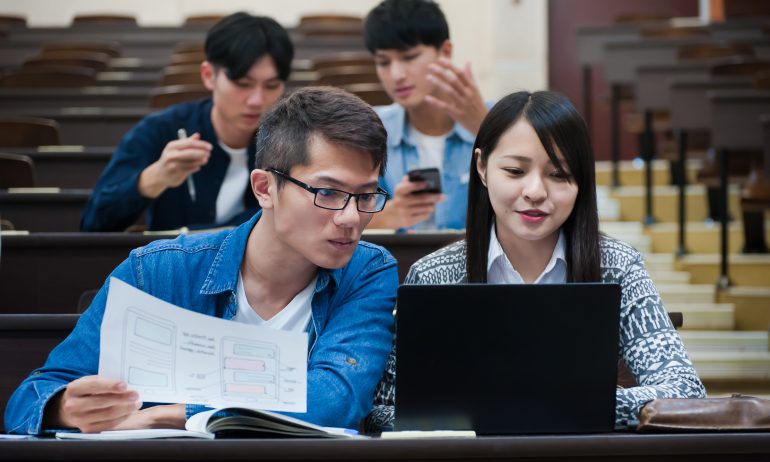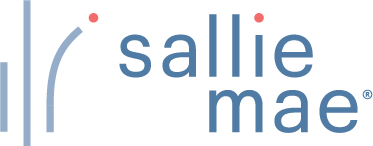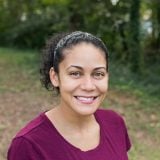NerdWallet’s Guide to Financial Aid Programs in Washington State

Many or all of the products featured here are from our partners who compensate us. This influences which products we write about and where and how the product appears on a page. However, this does not influence our evaluations. Our opinions are our own. Here is a list of our partners and here's how we make money.
The Evergreen State has a robust network of public colleges and universities, as well as career and technical schools and private colleges. Well-known institutions within the state include University of Washington, Whitman College and Gonzaga University.
Washington has a higher cost of living than most states, making it more difficult for some families to afford higher education. The average student loan balance per borrower in the state is $35,223, which is slightly higher than the national average.
However, the state offers valuable financial aid programs to help make college more affordable. Low- and middle-income families can qualify for substantial aid, and depending on the household’s income, up to 100% of tuition may be covered. Take advantage of Washington’s financial aid programs to make a degree much more attainable.
Student loans from our partners

on Sallie Mae
Sallie Mae
4.5
NerdWallet rating
4.5
NerdWallet rating4.5% - 15.49%
Mid-600's
on Sallie Mae
on College Ave
College Ave
5.0
NerdWallet rating5.0
NerdWallet rating4.07% - 15.48%
Mid-600s
on College Ave
on Ascent
Ascent
5.0
NerdWallet rating5.0
NerdWallet rating4.09% - 15.66%
Low-Mid 600s
on Ascent
The cost of education in Washington state
There are six public four-year colleges and universities in Washington state, and at least 10 independent, non-profit private schools.
The cost of attending a public school in the state is similar to the national average — but the cost of attending a private school is significantly higher. Here’s how much you can expect to pay for per year for tuition, room and board and other required fees at Washington’s colleges or universities, according to the National Center for Education Statistics 2020-21 data:
Public four-year (in-state): The average total cost of attendance was $21,027, about $300 less than the national average.
Private: The average cost of attendance at private non-profit four-year schools was $54,047, nearly $8,000 higher than the national average.
Public two-year: The average cost of attendance at community colleges was $4,564, about $1,000 higher than the national average. (This does not include room and board.)
Financial aid options in Washington state
To qualify for in-state tuition and state-based aid in Washington, you must live in the state for at least one year prior to enrollment. There are some exceptions. For example, students with membership in a federally recognized tribe with tribal boundaries in Washington can qualify for residency if they live for at least 12 months in one of the following states: Idaho, Montana, Oregon or Washington.
Both Deferred Action for Childhood Arrivals, or DACA, students and undocumented students can qualify for Washington’s in-state tuition rates and state financial aid as long as they lived in the state for at least 12 months prior to enrollment and meet other requirements.
Residency requirements, laws and state budgets can change, so visit the Washington Student Achievement Council website for the most up-to-date information.
Washington state operates several financial aid programs that can significantly reduce out-of-pocket education costs. Depending on your household income, education goals and intended career, you may be able to use one or more of the following programs:
529 plans.
In-state tuition.
Grants.
Scholarships.
Tuition waivers.
Loans.
Work-study.
Student loan repayment assistance.
529 plans
A 529 plan is a tool families use to help their children save for college or career training programs. Washington has two options:
Guaranteed Education Tuition.
DreamAhead.
Guaranteed Education Tuition
Guaranteed Education Tuition is Washington’s prepaid tuition plan. It allows families to buy college units, or credits, that can be redeemed in the future when the child is ready to enroll in school. Funds can also be used to enroll in schools outside of the state, including private schools.
Units purchased through GET are guaranteed to keep up with the rate of tuition and fee increases at Washington’s highest priced public university. Your savings in a GET account are backed by the state of Washington and not subject to stock market whims.
DreamAhead
The DreamAhead program is a 529 investment account. You can open an account with as little as $25, and you can choose from available investment options to potentially grow your contributions over time. The money grows tax-deferred and, if withdrawals are used for qualifying education expenses, the withdrawals are tax-free too.
Although some states offer added benefits such as state contributions or state income tax deductions, Washington doesn’t have a state income tax and doesn’t offer those perks.
In-state tuition
Higher education in Washington state can be expensive. But attending a public college or university as a resident of the state can be a smart way to save money; the average cost of attending a public school is about $33,000 less than attending a private school in the state. However, there are some options if you want to go to school in another state.
Western Undergraduate Exchange
Washington participates in the Western Undergraduate Exchange, a network of 16 states and territories that operate tuition reciprocity and exchange programs.
Washington residents can attend select colleges in a participating state and pay no more than 150% of resident tuition rate. Participating states and territories include: Alaska, Arizona, California, Colorado, Hawaii, Idaho, Montana, Nevada, New Mexico, North Dakota, Oregon, South Dakota, Utah, Washington, Wyoming, and the Commonwealth of the Northern Mariana Islands.
In-state tuition for Oregon residents
Some Oregon residents can qualify for in-state tuition rates at Washington colleges and universities. To qualify, you must live near the Oregon-Washington border or have recently relocated to Washington. Only students attending one of the following schools are eligible:
Clark College.
Columbia Basin College.
Grays Harbor College.
Lower Columbia College.
Walla Walla Community College.
Washington State University-Vancouver.
Washington State University-Tri Cities.
Washington state grants
Washington state operates three grant programs. These grants are issued based on financial need and can cover a substantial amount of your education expenses. Unlike loans, grants are “free money” that never needs to be repaid.
Washington College Grant
The Washington College Grant is one of the most generous state financial aid programs in the country. Awards are based on your family size, household income and cost of your school or program. Qualifying students can receive a grant that pays up to the full cost of tuition.
The Washington College Grant can be used at state schools, apprenticeship programs and career schools.
Low- and middle-income households can qualify for the grant. For example, a family of four that makes $64,500 or less would qualify for a grant that covers a student’s full cost of tuition. For a family of four that earns up to $107,000, the grant is reduced to cover a portion of the tuition.
You can use the Washington Student Achievement Council financial aid calculator to determine how much financial aid you could receive.
National Guard Postsecondary Education Grant
For Washington state residents who serve in the National Guard, the National Guard Postsecondary Education Grant helps pay for education expenses that aren’t covered by other financial aid. Awards vary by year and program funding, but they typically range from $1,500 to $5,500. They can include a one-time $500 allowance for books and supplies. Participants must commit to one year of National Guard service for each year of funding.
Opportunity Grant
The Opportunity Grant is a program for low-income students. It pays for up to one year of tuition or a certificate program and up to $1,000 for books and supplies. To qualify, your household income must be at or below 200% of the federal poverty level for your family size.
Washington state scholarships
There are several scholarship programs in Washington for academically talented students. Award amounts vary, but some scholarships can cover full tuition costs and even provide a stipend for other expenses.
American Indian Endowed Scholarship
Students with financial need and close social and cultural ties to the American Indian community within Washington state may be eligible for the American Indian Endowed Scholarship. Qualifying students can receive between $500 and $2,000 to pay for their education, and they can receive funding for up to five years.
The program prioritizes applicants in the upper levels of college and graduate school, but all students are encouraged to apply. Between 10 and 15 students are chosen for the scholarship each year.
To qualify, you must intend to use your education to benefit Washington’s American Indian Community.
College Bound Scholarship
The College Bound Scholarship is a unique needs-based program: The state commits to providing future financial aid to students while they’re in middle school. If students enroll in the program and sign a pledge, the scholarship will cover the average cost of tuition at Washington state public college rates, and it will also pay for some school fees and provide a small book allowance. Eligible students must attend one of more than 65 public colleges, universities or technical schools within Washington state.
Under the scholarship’s terms, students must pledge the following:
They will graduate from a Washington high school or approved homeschool program with a GPA of 2.0 or better.
They won’t have any felony convictions.
They will fill out the Free Application for Federal Student Aid — FAFSA — or the Washington Application for State Financial Aid, or WASFA.
To qualify for the scholarship, the student’s household income must be less than 65% of the median for the state.
Washington Award for Vocational Excellence
The WAVE Scholarship is for high school seniors and community and technical students who display outstanding performance in career and technical education programs. Qualifying students who enroll in an eligible program can receive between $4,500 and $11,700 per year, for up to a maximum of two years.
Washington State Opportunity Scholarship
The Washington State Opportunity Scholarship helps low- and middle-income residents pursue degrees, certificates or apprenticeships in high-demand areas, such as STEM or health care. The program can be used to pay for both undergraduate and graduate degrees, but award amounts vary by year and program.
Students pursuing a bachelor’s degree can receive up to $22,500 through the program.
To qualify, students’ household incomes must be less than 125% of the median for the state. You can use the Washington state income chart to see if you qualify.
Passports to Career program
The Passports to Career program is for foster youth or students who are homeless without a parent or guardian. Through the program, students can get guidance choosing a career path, funding for college or training programs and money for living expenses.
Funding varies by year and chosen school, but the program can cover tuition, fees, textbooks, room and board, transportation and other expenses.
Washington State Educator Workforce Program
The Washington State Educator Workforce Program is a conditional scholarship for students who intend to pursue careers as teachers.
If you commit to teaching in high-need areas for a specific amount of time, you could receive up to $8,000 for up to two years. However, if you fail to complete the service obligation, the scholarship is converted to a loan, and it must be repaid with interest.
Tuition waivers
In Washington, some groups can qualify for tuition waivers at select public schools. Depending on the school, you may be eligible for a waiver of all or part of undergraduate tuition and fees, and you may be eligible for up to $500 to pay for books and supplies.
Tuition waivers are available to the following groups:
Veterans.
Children, spouses and domestic partners of one of the following.
Veterans or National Guard members that became totally disabled as a result of active military service.
Military members who are prisoners of war — POW — or missing in action — MIA.
Military members who died as a result of active military service.
State student loan programs
Many students rely on either federal or private student loans to pay for their education after exhausting other financial aid, like scholarships. In Washington, students accepted into the Washington Aerospace Training and Research Center may qualify for the Aerospace Loan program.
The Aerospace Loan program provides low-interest loans to students, up to the following maximums:
Up to $2,500 for the online training module.
Up to $3,200 for the second training module.
Up to $3,200 to complete the Quality Assurance Certificate.
The loans include a six-month grace period, and students have four years to repay them. Interest doesn’t accrue on the loans until after the grace period ends — a benefit which can result in significant savings.
The interest rate on the Aerospace Loan program loans is matched to the current rate for federal Direct subsidized loans. For the 2022-23 academic year, that rate is 4.99%.
Other financial aid programs in Washington state
There are two other financial aid programs in Washington that may be helpful to some students.
Seattle Promise
The Seattle Promise program provides free tuition at select Seattle colleges for students who attended an eligible public high school within the city. The program provides free tuition for two years, 90 college credits or a student’s first degree, whichever comes first.
State Work Study
The State Work Study program can be useful for low- and middle-income students. Through the program, students can get an approved on- or off-campus part-time job and earn money to offset their education expenses. Pay varies by job, but students generally earn between $2,000 and $5,000 per year.
Student loan repayment programs in Washington state for health care providers
If you are a health care provider in the state and have outstanding student loans, there are four state loan repayment programs that may help.
Nurse Educator Loan Repayment
Nurse educators with advanced degrees who are faculty members in approved nursing programs can qualify for the Nurse Educator Loan Repayment program. Participants who work for at least three years as nurse educators can receive up to $75,000 in loan repayment assistance.
The program can be used toward federal and private student loans that directly funded a nursing degree.
State Health Program
The Washington State Health Program provides up to $75,000 in loan repayment assistance in exchange for three years of full-time service at a pre-approved site.
Eligible health care professionals include physicians, physician assistants, nurse practitioners, certified nurse midwives, registered nurses, pharmacists, dentists and registered dental hygienists.
The program can be used to repay federal and private student loans that directly funded the education for borrower’s current medical profession.
Behavioral Health Program
Through the state Behavioral Health Program, nurse practitioners, substance use disorder professionals, clinical social workers, clinical psychologists, marriage and family therapists and mental health counselors can receive up to $75,000 to repay their loans. To qualify, health care professionals must commit to at least three years of service at a pre-approved site.
Funds received through the program can repay federal and private student loans that directly funded the education for the borrower’s current medical profession.
Federal Health Program
Under the Federal Health Program, qualifying health care professionals who work at a pre-approved site full-time for at least two years can receive up to $70,000 to repay their loans.
Eligible professions include physicians, physician assistants, nurse practitioners, certified nurse midwives, registered nurses, pharmacists, dentists, registered dental hygienists and substance use disorder professionals.
The program can be used for federal and private loans.
How to apply for financial aid in Washington state
To apply for state-based financial aid in Washington, follow these steps:
Fill out the FAFSA or WASFA: The federal government, the state of Washington and many colleges and universities require a financial aid application to qualify for assistance. Most students will need to complete the FAFSA. However, if you are an undocumented student or aren’t eligible for the FAFSA for another reason, you can fill out the WASFA to apply for state-based aid.
Contact your school’s financial aid office: If your circumstances have changed since you submitted the FAFSA or WASFA, or if you want to ask about deadlines for institutional aid, contact your selected college’s financial aid office.
If you need help understanding your financial aid options or submitting your application, Washington has several tools that can help.
OtterBot is a free texting service for Washington high school juniors and seniors enrolled in the College Bound Scholarship program and their families. You can text questions about financial aid and receive answers through the service.
You can also contact Washington’s Student Financial Assistance department at 888-535-0747 or by emailing [email protected].
On a similar note...
Powered by






